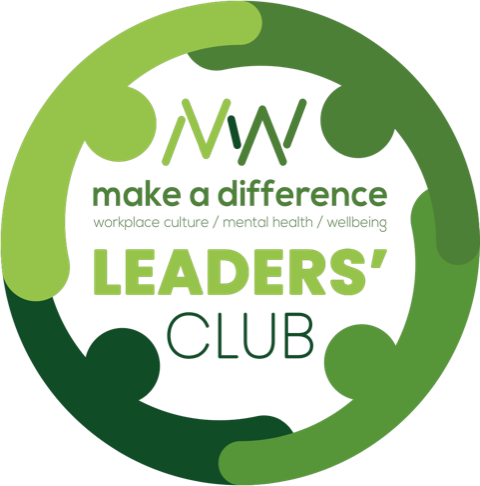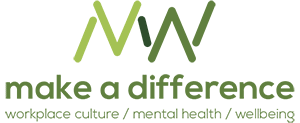The 8th Annual MAD World Summit
Rethinking work, reimagining engagement, reinforcing health & wellbeing
Since launching in 2018, the MAD World Summit has been at the forefront of redefining employee health and wellbeing. In 2025, we’re going even further. This year, MAD World brings together four powerful tracks in one transformative day — built to break silos, spark cross-functional collaboration, and align workplace culture, employee health and wellbeing with business strategy.
As organisations adapt to ongoing change — from economic pressure to shifting employee expectations — the focus is no longer just on why health and wellbeing matters, but on how to make it work as a strategic lever for engagement, growth and performance. Senior leaders across functions are now asking:
- How do we move from fragmented efforts to integrated strategy?
- How do we focus on delivering measurable outcomes and ROI?
- How do we design work to support people — and enable performance?
“From strategic insights to practical takeaways, sessions are carefully curated to help you navigate uncertainty in an increasingly volatile world, support your people more effectively, and unlock their full potential—now and into the future”.
Claire Farrow, Global Head of Content, Make A Difference
Topics we’ll be addressing include:
- Debate: Employee health and wellbeing – strategic imperative, moral mandate or both?
- Keeping Britain working: The employer’s role in shaping a resilient economy through prevention, retention, early intervention and rapid rehabilitation
- Power in Alignment: How CHROs, CFOs and CIOs are collaborating to make health and wellbeing a business driver
- Leading through change: Supporting employees’ health and wellbeing through uncertain times
- Future-proofing health benefits: Focusing on prevention to manage rising costs without compromising care
- Navigating AI Disruption: Protecting employee health and culture in a tech-driven future
- Emerging health risks and how employers can prepare to maintain business resilience
- EAPs in a VUCA world – are they fit for purpose?
- Unpacking Psychosocial Risk: What’s driving it – and what employers must change
- DE&I in the new world order: Building workplaces that support everyone’s health and potential
- Future-proofing talent: Integrating health, wellbeing and skills development in a multi-generational workforce
- From Insight to Action: How the legal sector can lead with a data-driven approach to supporting mental health, wellbeing and culture
- Miscarriage to menopause: are workplaces failing women?
- The strategic advantage of a financially fit workforce
And more.
The MAD World Summit will bring together senior decision-makers from HR, Finance, Benefits, DE&I, Health & Safety, L&D, Culture, Occupational Health, and Communications — all committed to integrating health and wellbeing into the core of how business gets done.
Wherever you are on your journey, join us for the UK’s leading B2B event for workplace culture, health and wellbeing. You’ll leave with the tools, connections and confidence to make wellbeing strategy a business advantage — not just a business case.

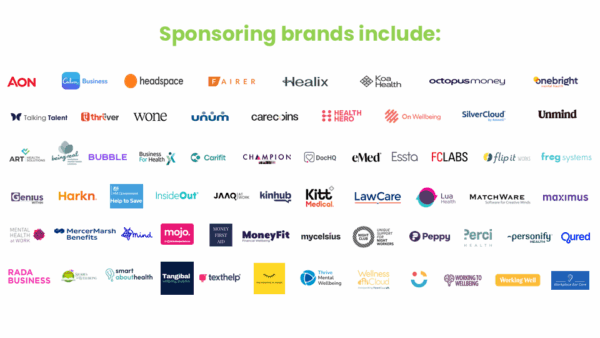
We'll Be Sharing
Latest Make A Difference News

Office of National Statistics (ONS) labour market figures just released show that unemployment in the UK is up on the last quarter, now sitting at 4.6%, and wage growth is at its weakest since September 2024.
These new figures suggest that businesses are using headcount reduction as the preferred way to manage costs, save money and free up budget to invest in tech.
Mark Jones, Employee Benefits Partner at financial wellbeing consultancy Isio, commenting on the implications said:
Employer response to NI & wage hikes
“The combined impact of higher National Insurance costs and the Minimum Wage hike is pushing budgets to breaking point. We’re hearing from clients that sign-off for new initiatives is getting tougher, with finance leads demanding robust evidence of ROI before investing in anything people-related. It’s putting even more strain on already-stretched teams who are trying to retain staff, reduce absenteeism, and keep benefits competitive.”
He said that one of the biggest barriers that Health and Wellbeing professionals face now is not scaling back strategies to save money – but that many organisations “have never meaningfully invested in one to begin with”.
Jones added:
“The solution isn’t to do less, but to do it smarter. That means using data to prove what’s working, prioritising investments that deliver measurable returns, and being honest about where legacy benefits no longer serve the business or its people. Employers who can’t justify their people spend risk being left behind.”
Protecting productivity
Manpower’s Employment Outlook figures, released at the same time, show that double the number of employers compared to the last quarter are struggling with economic uncertainty, with 64% naming this as their main concern.
Commenting on the ONS market report, Michael Stull, Managing Director at Manpower Group UK, said that many UK employers are “feeling mounting pressure to do more with less”.
But Stull added that the sharp drop in employers intending to hire new staff in the third quarter of 2025, reflected in Manpower’s research, shows “a measured reset” and “not a collapse”.
He said:
“Employers are pausing to protect productivity, not abandoning growth altogether.”
According to Manpower, hitting this new low is a symptom of the labour market re-aligning after the changes imposed by the National Insurance and Living Wage increases, alongside the recent uncertainties of the US trade tariffs. Its report predicts that employers will ‘wait and see’ to gauge the extent of the reset, rather than making any kneejerk decisions towards the end of the year.
What other implications for Health and Wellbeing?
For those working in Health and Wellbeing, this increasingly uncertain job market adds to employee stressors, which are already high due to rising cost of living and global volatility including wars and US trade tariffs; all of which make supporting employee financial wellbeing a growing priority.
Manpower figures also show that employers are increasingly taking on temporary staff, because this is more flexible, cheaper and lower-risk. This means professionals will need to account for this in their Health & Wellbeing strategies supporting the entire workforce to optimise productivity at a time when resources are stretched more than ever.
You might also like:
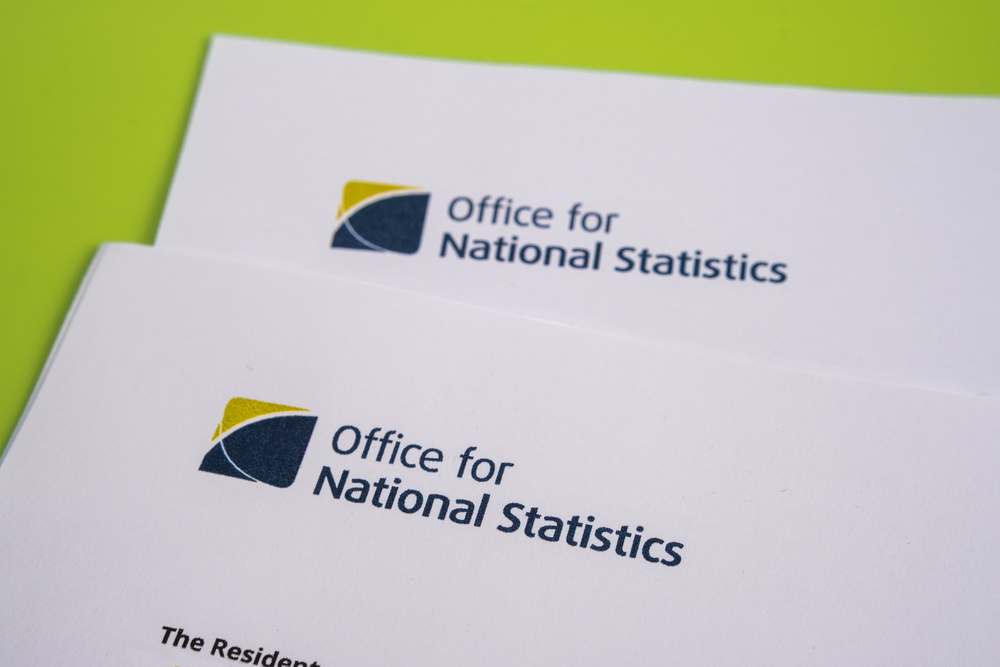
New ONS Figures: National Insurance and minimum wage hikes mean employers under pressure to deliver more with less
Tesco has announced its continued commitment to employee wellbeing through a renewed partnership with Wellhub, extending enhanced wellbeing benefits to its more than 300,000 workforce across the UK.
As part of this strategic renewal, Tesco is relaunching the Wellhub programme with significant platform improvements designed to simplify access and boost usage.
What really stands out is that the partnership is designed to tackle challenges that many employers are facing when it comes to meeting the needs of diverse, disparate and complex workforces:
- It introduces a streamlined one-click registration process (replacing an eight-click process) that could significantly boost adoption rates – a key challenge for HR professionals
- It now serves varied employee groups, from store colleagues to delivery drivers, to office teams, each with different schedules and locations, addressing a key challenge for large retailers with complex workforce structures
- It provides enhanced family coverage that allows employees to add family members at accessible price points, reflecting the shift toward benefits that support whole-life wellbeing rather than individual workplace perks
The journey
What began in January 2019 as access to fitness facilities has developed into a comprehensive wellbeing platform addressing Tesco’s three pillars of wellness: healthy body, healthy mind, and nutrition. With +25,000 Tesco employees already enrolled and experiencing transformative benefits through Wellhub, the relaunch aims to extend these advantages to more of their workforce.
“After six years of partnership, Wellhub has evolved from simply being a gym benefit, by becoming a more holistic proposition, aligning with our wellbeing strategy,” said Dhavani Bishop, Head of Group Colleague Health & Wellbeing at Tesco. “The increased accessibility of physical locations and the range of choice appeals to our diverse colleague base. With the streamlined one-click registration, access to physical fitness, mental wellbeing and family health we’re excited to relaunch this enhanced programme across our UK and ROI businesses.”
Key benefits for Tesco employees:
- Enhanced User Experience: The Wellhub app has evolved to become more user-friendly, with a streamlined one-click registration process replacing the previous eight-click flow, effectively removing key barriers to participation
- Addressing Diverse Workforce Needs: Solutions have been refined over six years to accommodate Tesco’s varied workforce across head offices, stores, and delivery operations with their differing schedules and locations
- Accessibility and Convenience: From the initial 1,400 to 3,000 fitness facilities, the network has expanded to provide convenient options for employees in many different locations
- Options at every price point: Employees can access fitness solutions across multiple price brackets, making wellbeing accessible to all budget levels
- Family-Inclusive Benefits: Employees can easily add family members to their plan at a price point that works for them.
- Specialised Wellbeing Programmes: Resources for specific employee resource groups have been developed, including parents’ wellbeing and women’s health initiatives
- Engagement Through Challenges: The partnership includes business-wide wellness challenges that drive participation in overall health and wellbeing activities
Q & A with Tesco leadership
Q: How are you measuring success beyond enrollment numbers?
“With the introduction of Wellhub for Companies, we now have real-time access to data that helps us go far beyond just tracking enrollments. We’re looking at how colleagues are actually engaging — how often they’re using the platform, what types of wellbeing resources they’re drawn to, and whether they’re returning regularly.”
Q: Why expand the partnership now, and how does this address the realities of retail work?
“Wellhub has already been a fantastic partner in helping us support our employees’ wellbeing. As the relationship has evolved, it’s become clear that there’s even more potential to integrate the platform into our daily employee experience and drive greater impact”
“Accessibility is key to helping us drive engagement for all our colleagues wherever they work. The new one-click registration and the wider range of options will mean all our colleagues have access to support that fits their needs and lifestyle. This next chapter is about deepening what’s already working and bringing even more value to our colleagues.”
The renewed partnership will continue to highlight the platform’s flexibility, accessibility, and comprehensive wellbeing approach that has evolved significantly since its 2019 launch.
For more information about how Wellhub visit wellhub.com.
You might also like:
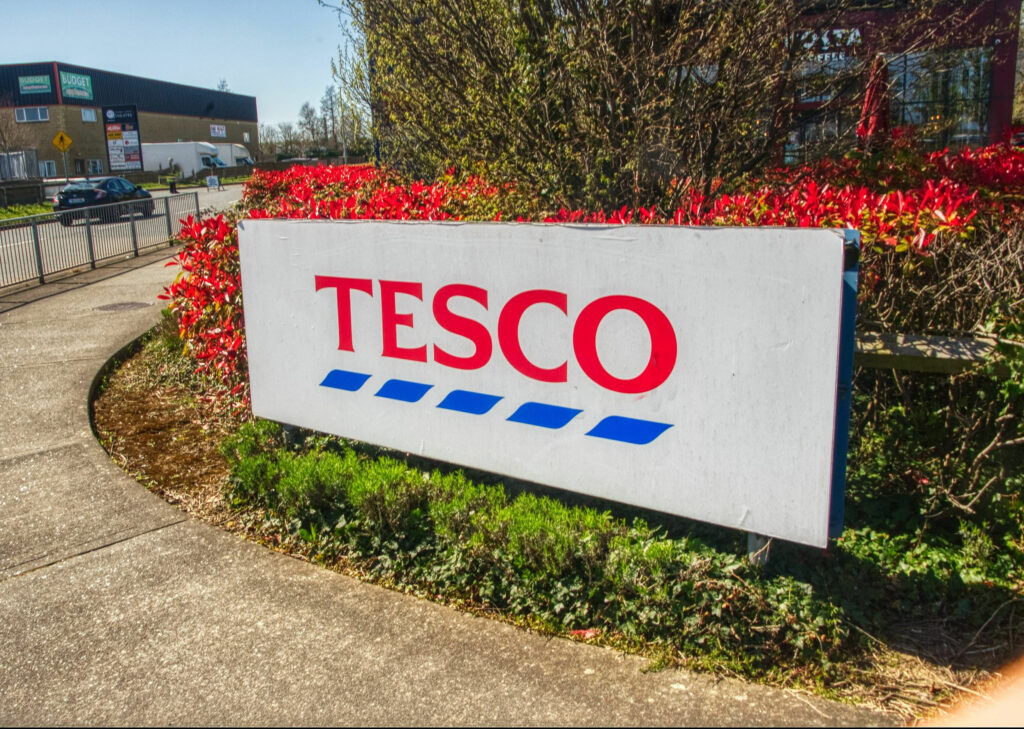
Tesco renews six-year partnership with Wellhub to expand employee wellbeing access
This time last year, during Men’s Health Week (MHW), council-run Active Leeds launched a Men’s Health Network.
This MHW, we talk to Neil Jones, Health and Wellbeing Lead at Active Leeds, about what has been achieved in 12 months, and advice to other employers looking to set up Health and Wellbeing support specifically for male employees…
What led you personally to be interested in engaging men, in particular, in Health and Wellbeing?
I started in sport and physical health and wellbeing as a Community Sports Coach, working in the most disadvantaged areas of Bradford and Leeds. I quickly started to connect with men in communities and realised there were a lot of barriers and stigmas inhibiting people from pursuing healthy behaviours, like taking up exercise.
There were, and continue to be, a lot of unhealthy behaviours, and a lot of health inequalities around Health and access in the local area, which is very diverse with a vibrant mix of different cultures.
What have you learnt most about engaging men in Health and Wellbeing?
That camaraderie and connection go a long way.
- Find common ground, not middle ground. Common ground is things you have in common, like talking about football or rugby
- Do things shoulder to shoulder
- Recognise it may not always be about talking and speaking; let some activities spontaneously play out before you try and get too deep into conversation
- With men, you need to focus particularly on gaining and building trust, and social capital and collateral.
Can you develop that last point on social capital and collateral related to men?
Yes, collateral is about creating a relationship which isn’t merely transactional, but there is a connection there.
There might also be ‘incentives’, which could be even small things like getting refreshments at a meeting. It could be getting a brew, biscuit or even being given your own branded mug at a meeting. Small things can make a big difference.
What was the inspiration for the Men’s Health Network you’ve created at Active Leeds?
We lost a member of staff far too early from cancer and we knew we needed to do something around encouraging men to have difficult conversations.
There is still stigma around asking for help and we didn’t have anything specific in place. Yes, we had Mental Health First Aiders and Health and Wellbeing Champions, but that solution wouldn’t have helped the colleagues we lost too early.
So what did you do?
Active Leeds is made up of 16 leisure centres which are open from 4am to 11pm, which involves lots of shift work, disrupted sleep and lots of different roles, from grounds people to personal trainers to management.
Being a leisure organisation, there was this assumption that ‘everyone’ is healthy and looks after themselves. But that’s not actually true. Not everyone’s background is rooted in exercise and health.
So we wanted to create a programme that would help support men to live healthier lives mentally and physically. I heard Emily Pearson [Founder of Wellbeing Lead Academy and developer of the Manbassador Programme] talk at a conference and was really intrigued by the Manbassador programme and using it as a blueprint.
We brought Emily on board, which was fantastic, as she helped us stick to tight timelines, managed the project and created a sense of self-belief in our team.
What does the Manbassador programme comprise?
It’s focused around our 10 ‘Manbassadors’ who are a diverse group of volunteers – old, young and from all different ethnic backgrounds – who represent our employee base. The programme is a listening and signposting service, and Manbassadors receive training to do this – it’s not designed to have Manbassadors support individuals on a longterm basis.
And you launched a year ago – in Men’s Health Week – is that right?
Yes. We got Olympian Alex Brownlee, boxer Josh Warrington and rugby league player Jamie Jones-Buchanan to front the launch. This was the hook to get men to come. And, to be honest, I think half of them were there to meet the sporting icons rather than hear about the programme, but we got 200 men into the room!
How do you communicate about the programme to your male employees?
We have information on our internal website. This introduces our ten Manbassadors and gives background on the lived experience they each have and the training they’ve received. Different Manbassadors have different training with someone specialised in, for example, drug addiction, suicide or trauma.
What would be your biggest bit of advice to other employers looking to set up a Men’s Health Network?
To ensure you have robust research and evaluation behind it. Don’t just charge on with the project without data. This was always something Emily stressed to us.
What data did you gather?
We gathered data before launch to find out what was already going on.
Then when the project launched we gathered data from the start. Every time a Manbassador had a consultation with someone they would fill out a very simple, anonymised, online form with ten questions.
Off the back of that, after a few months, we were able to look at trends. We were also able to link this data with sickness data and data about our male employees with longterm health conditions, or at risk of going off sick.
This enabled us to pivot the project and move forward depending on our needs. For instance, when we spotted specific areas of health that were an issue, we were able to send some Manbassadors on specific training, run workshops and ensure we had good signposting for individuals needing support.
What were the obvious trends you expected?
Complaints about musculoskeletal health, bad backs and shoulders particularly, and mental health. Other issues that come up quite a bit are financial stress, the cost of living crisis and addiction.
Did any data surprise you about men’s health?
Yes. There were a couple of curveballs we weren’t expecting.
Gambling, for one. I’m not a gambler or a gamer, so I was surprised at what a big issue it is, particularly for the under 25s age group. Gambling games can easily be played without others knowing at work and losing money affects performance at work, and wellbeing, because this creates huge stress.
Then also the menopause. We got a lot of feedback from men in partnerships with women going through peri or menopause, about the anxiety and stress of either supporting her through this, or things happening as a result of it.
Do you think, as others are saying, that there’s a ‘crisis of masculinity’ going on in society?
These are tricky times for everyone. There are wars. A cost of living crisis. Struggles for many to put food on the table and pay bills.
In this area in particular, Leeds, there’s been rapid growth and change but, actually, many areas are suffering from deep inequality, economic and health related. Things have got harder than when I started working here 17 years ago which explains why, now, the food banks are full to bursting.
I think what is tricky in particular for men is the historical role of the man has been the ‘provider’ so what I observe a lot is men saying ‘I’ve got a bad back [or another health issue] but I can’t be off sick, because I won’t get paid’. Men tend to deprioritise health to make ends meet.
Presumably this data collection helped with buy-in to senior management to argue this work aimed at men is worth the investment?
Yes, especially as times are hard and budgets are tight. Luckily, we are part of something called the Be Well Group, which covers the whole council, so we accessed funding from there by arguing the business case that this was investing to save and delivering cost savings in the longterm. This has definitely been the case which we’ve been able to prove, particularly as we’re not talking large amounts of money.
What are you doing for Men’s Health Week this year?
Alot! We have roundtables going on around topics like how to remove stigma around seeking help. We also have numerous activities going on like paddle tennis, archery, table tennis, rock climbing, walking and online workshops.
One of the things I’m most looking forward to is that three of our employees are sharing their stories with the rest of the service, which is brilliant as role models are so important. I think that’ll be emotional and we’ll see some male tears.
What’s the future for your Men’s Health Network?
Well, given we’ve been able to prove the ROI within Active Leeds, the council is now looking at how it could implement something similar in other parts of the organisation. For instance, areas which have high male employee bases coupled with high sickness levels, like people working in building services, those collecting bins and sweeping streets, fixing council houses, etc.
I’ve also been invited to dinner at the House of Lords in July to share our experiences and have conversations with other partners, stakeholders and politicians about men’s health – so who knows what ideas will come out of shared insights there…
You might also like:

Active Leeds: how building a Men’s Health Network on data paved way for success
It’s currently Men’s Health Week (9-15 June) and to recognise the power of men opening up and telling their stories, especially at work around their mental and emotional health, we invited this week’s contributor to speak to us about his experience of grief. He shares the learnings from making a film about losing his dad called ‘rites’ and using it to start conversations in workplaces.
Over to Alvin…
Storytelling—especially through moving image and sound—can open people up in ways that words alone often cannot.
In workplaces, where grief is often hidden or ignored, storytelling can be a spark for much-needed conversations because it gives people permission to be real, to uncover issues long left unspoken and to seek or offer support.
When my father died, I was nine years old. I carried that loss with me for 25 years. It wasn’t until I travelled back to the Philippines to organise a memorial for him that I fully grasped what his death had taught me.
The Hidden Impact of Grief on Leadership
Loss has a way of shaping us in ways we may not even realise. Many of the world’s most influential leaders—from Prime Ministers to CEOs—experienced childhood bereavement. In some industries, such as hedge funds, early-life adversity is even seen as a predictor of resilience and high performance. I have also heard of a WhatsApp group called “Dead Dads Club”, whose members are senior executives of a major media organisation.
Yet, to truly unlock our potential, we must first face our past, acknowledge our grief and heal. Only then can we be free—free to lead, to create, to build lives of meaning.
For those who support bereaved colleagues, this is an essential insight. Instead of seeing grief as something to be “moved on” from, we should recognise it as a defining life event—one that, when properly understood, can foster growth, leadership, and deeper connections with others.
How bereavement affects work
Most organisations still treat grief as an isolated event, offering only a few days of compassionate leave. But bereavement doesn’t operate on a timetable. It can affect focus, productivity, and mental health for months—sometimes years.
Companies that genuinely care about their employees must go beyond short-term gestures and build long-term, meaningful support systems:
- Grief-Informed Leadership – Managers should be trained to understand how loss affects employees and how to offer compassionate, practical support
- Flexible Leave and Work Arrangements – The ability to take time off when grief resurfaces (not just in the immediate aftermath) can be transformative
- Mental Health and Peer Support – Providing access to grief counselling, employee-led bereavement groups, or mentorship from those who’ve experienced similar losses fosters a culture of care
But beyond policies and programmes, what truly creates a supportive environment is openness. And this is where storytelling can play a vital role.
The Power of Storytelling in the Workplace
Through sharing rites I’ve seen how film can serve as a powerful tool for supporting colleagues through grief. A well-told story can move people in ways that statistics or policies cannot. It creates a space where people feel safe to open up, to acknowledge the losses they’ve experienced and to start important conversations.
By simply watching a story unfold on screen, people often feel seen—as if someone has put into words and images what they have struggled to express themselves. It can give them permission to process their grief, to seek help, or to support others in their workplace who may be silently struggling.
It’s about humanising grief and fostering a culture where people don’t feel they have to suppress or hide such a fundamental human experience.
Moving forward
Grief is not something to be ignored or rushed through. If we want to live fully, we must first face our losses, our demons, and our past. True liberation comes when we acknowledge our pain, heal from it, and use it as a force for good.
rites is my way of doing that—of honouring my father, embracing what matters most, and reminding others to do the same. Because in the end, life isn’t just about what we say we believe. It’s about how we live those beliefs, how we show up for those we love, and how we create a world where no one has to navigate grief alone.
About the Author
Alvin Carpio is the director of the short documentary film rites, which follows his journey to the Philippines to organise a memorial service for his father—25 years after his passing, when Alvin was nine years old. The film explores themes of childhood bereavement, leadership, hope and healing. rites will be released this Father’s Day (this Sunday, 15th June).
Through both personal experience and professional work, Alvin is dedicated to reshaping bereavement support—ensuring that grief is not just acknowledged, but understood, embraced, and transformed into a force for growth.
You might also like:

Grief: stories and openness can be best colleague supports
One of the most fascinating employer case studies presented at this year’s Watercooler was by pharmaceutical company GSK on how it created, what it calls, “Britain’s Healthiest Building”.

This was following the firm’s decision, three years ago, to move from its headquarters in Brentford to a new office near Tottenham Court Road station, birthing this bold ambition and the start of ‘Project Emerald’.
GSK Head of EMEA Chris Higgins began his presentation by pointing out the problematic nature of even calling a building “most healthy” because that is still something businesses are trying to define.
Healthy workplace?
As he said:
“With the new GSK HQ, we set out to create one of the world’s healthiest workplaces. But what does that mean? How on earth do we do that? Is that Julian, or Sheila, in accounts doing arm presses and bicep curls at their desk? Or star jumps? Or is it everyone being mindful, sitting on the floor cross-legged?”
To answer these questions, the first step was to “onboard partners”, like the International WELL Building Institute (IWBI), which Higgins co-presented with, early in the programme to define the strategy. The team had a very short amount of time – nine months – to fit out the 150,000 square foot space.
In short, the team concluded that creating a healthy workplace was primarily about “removing barriers” and thinking differently about what has been done in the past. The employer had already done a lot of thinking on this topic, having hired ART Health Solutions in 2018 to audit its previous site, GSK House, when it created the ‘Workplace Performance Hub’. This was all about how you improve the performance of individuals, by looking at variables like office temperature, energy levels, lighting, colours and scent.
Flip metrics on head
But with project Emerald, GSK wanted to “accelerate this even further” and one of the most innovative things it did was flip its measurement metrics on their head:
“Instead of focusing on performance in the post-Covid era, we started focusing on health. Working with people so closely in this industry, we knew that when you drive and support health of individuals, performance naturally follows.”
Consequently, with its partners, GSK started measuring health-related activities, rather than performance per se, such as heart rates, sleep patterns, daytime activity levels, stress levels, cognitive performance at the office versus home, working memory, etc.
“The other important piece that we measure is the human impact of what we’re creating,” said Higgins.
No standard gym
Its innovative and health-rather-than-performance approach to the company gym exemplifies this approach.
Higgins explained:
“Normally a corporate gym is in the basement. It’s a second thought. A really small area. And people are charged to use it. But we elevated it up to the ninth floor, where the entire floor is taken up by wellness, with full state of the art technology and equipment. And it’s free.”
GSK saw a significant change in behaviour. “I often go up to the ninth floor now and see people with compression trousers on, or sitting on a Teams call while looking out the window, or coming into the office to use the premium gym, and this is just the healthy behaviour we want to see,” said Higgins.
The gym also serves an additional purpose – as well as creating a space where people can get fit and connect with others – and that’s to supply valuable data which measures progress.
Tracking improvement
For instance, the state of the art tech in the gym monitors a raft of variables of individuals such as their mindfulness activity, flexibility improvement, physical wellbeing, etc. This information all feeds back into a central hub, which aggregates the data so GSK knows results such as how many miles have been run on the treadmills, or kilometres cycled on the bikes, etc.
“We can see the marked improvement in the activities but, most importantly, we’ve made it competitive for them as well. People can see how they’re doing individually, or by team. This gamification of health and wellbeing removes barriers too,” he said.
The fact that the gym is open to GSK employees and contractors, but also their guests who come into the building, reflects a wider approach to building: a focus on community building.
Community building
With its food strategy, for instance, the healthy food it serves is available to buy by the public, and the employer hosts groups of school children to learn about nutrition, too.
“We’re giving back into the community and impacting, not just the staff within our space, but people around the building in a positive way too” said Higgins.
“This means that the business case also includes positive impact on the community and creating a place where people are proud to work, and want to come to. The revenue generated from the public also removes the need to subsidise the food.”
Any produce not used in its restaurant, which is all UK-sourced, is given to local foodbanks, too.
Concierge service: why?
GSK’s innovative thinking is also reflected in how it’s making the office a more desirable place to be such as its concierge service, which helps do errands such as picking up dry cleaning, sorting emergency childcare, booking a holiday/theatre tickets and getting a plumber.
“Why would we do that? There are a few reasons,” said Higgins. “People are probably doing these things at work. We’ve all done them. So we are taking these tasks away and giving them an easier option which enables them to focus on their work and reduces their stress and makes them more productive.”
He estimates that this service saves roughly 1.5 hours for every request received.
ERGs fundamental
The new office has already been awarded various accolades and builds on GSK’s engagement in IWBI’s WELL at scale programme, which helps leaders prioritise health and well-being across their organisation or real estate portfolio. GSK has enrolled 67 of their locations across more than 195,000 square metres in 23 countries, which impacts nearly 11,000 people. Already, the company has achieved two WELL Certifications at the Platinum level, two Gold level WELL Certifications and 67 WELL Health-Safety Ratings.
Higgins puts success at Project Emerald partly down to the way that teams across GSK have been engaged in the project. For instance, ERGs have been “fundamental”:
“You can’t create the world’s healthiest building without knowing who your client is. And you can’t be inclusive if you don’t work with the groups that have to work in that space, especially those that don’t necessarily have the loud voice of the masses.”
Employees more productive in office
At time of publishing, GSK couldn’t share “exact numbers” measuring the success of the building, but was working on a white paper to this end. However, Higgins confirmed that the employer could prove “a significant reduction in stress and an improvement in working memory”. Additionally, the results show that employees are more productive when they come to the office.
The reason that GSK is so keen to share its experiences and share them at events like The Watercooler is the hope that it will inspire other employers to set the same healthy ambitions. Higgins explains:
“We want other companies to strive to create the healthiest buildings in the world and that’s why we share the information that we can, and why we’re continually evolving our site and want to work with world leaders.”
You might also like:

GSK: How do you create an office people actually want to come to?
Cancer was the main cause of insurance claims, across all risk categories, in 2024, according to new research from Group Risk Development (GRiD).
The three main categories and their percentage of claims for cancer are:
· Group Critical Illness: 68%
· Group Life Assurance: 39%
· Group Income Protection: 27%
Ongoing support is crucial
These benefits provide a range of cancer support for employees, including access to oncologists, healthcare professionals such as psychologists and physiotherapists and other specialist support such as vocational rehabilitation. They also offer access to other resources, like reading materials and workplace training and guidance to enable line managers and HR professionals to feel able and confident to support staff.
Katharine Moxham, spokesperson for GRiD said:
“Ongoing support is crucial – as although the cancer itself may be in the past – fatigue, anxiety, and the side-effects of treatment may still be very much in the present.”
Go beyond ringing the bell
As identified in this article to mark National Cancer Survivors Day (1st June), there is a common cultural misperception that the journey is over when the “bell rings”. However, this often signals the time when employers need to step up most and facilitate a successful return into the workplace. Work can be very beneficial for a person’s mental health and serve as an effective recovery tool.
“As we honour the individuals who have survived cancer, it’s important to ensure that employers have the knowledge and the means to support those who can, want and need to return to the workplace,” said Moxham.
Research shows that employees with cancer often workplace support is inadequate. For example, only 43% of employees who have, or had, cancer were satisfied with their employer’s return to work programme, according to research by Working to Wellbeing, and 71% of UK workers with cancer feared telling their employer, according to Working with Cancer.
The fact that 96% of employers do not have a cancer specific policy [ref. Working with Cancer] supports the view that employers are not providing enough of a tailored approach to this increasingly prevalent workplace illness. As this article on 11 best practice checks, the first is to develop a cancer policy, read the full piece for more practical takeaways.
You might also like:

With cancer now #1 workplace insurance claim, employers must step up support
Picking the right partner, which lives up to its sales blurb and can demonstrate robust ROI, was one of the hot topics discussed at this year’s Watercooler Event, especially in the Leader’s Club.
As budgets tighten, but employee demand for mental health support stays high, leaders are under pressure to make smart, impactful choices.
In this article, venture capitalist Danish Munir, Founding Partner at GreyMatter Capital, shares his view on how the corporate mental health market is evolving – and what decision-makers need to consider when selecting wellbeing partners.
Having spent over a decade investing in mental health startups, he shares a unique perspective on where the corporate wellbeing solutions market is heading – and how leaders can choose partners that will drive long-term value…
What inspired you to focus your investment career specifically on mental health and behavioural health startups?
My journey into mental health began 14 years ago after a family experience opened my eyes to the stigma and lack of access, both in Pakistan where I grew up, and here in the U.S.
Inspired to help, I co-founded a telepsychiatry company, Genoa Telepsychiatry, to serve underserved patients, believing technology could bridge the gap. Since then, I’ve been committed to finding practical solutions that make a real difference.
Can you cite any examples of mental health product innovations that you’ve seen make a real, measurable difference to employers?
Yes, of course. There are currently two companies in our portfolio that are excelling in the corporate mental health space.
Firstly, Pelago Health is using a virtual substance-use care solution. It helps employers tackle sensitive addiction issues, like alcohol and opioid abuse, with added reassurance of confidentiality, which makes employees more likely to access it.
With a 62% reduction in alcohol use in just 30 days, it’s a strong example of a partner delivering measurable outcomes on a workplace taboo.
Secondly, Kyan Health. It offers a modern alternative to legacy EAPs, with AI-driven support and employer dashboards. This kind of transparency helps leaders in the Health and Wellbeing space make wellbeing visible and measurable at leadership level.
How likely is it that we will continue to see innovation prioritised in this market, and that top tech entrepreneurs will continue to take an interest in it?
I’m confident there will be many other innovations like Pelago Health and Kyan Heath hitting the market because, from an investor’s perspective, the mental health sector – particularly corporate mental health – remains remarkably resilient, even as other health and wellness categories have faced headwinds.
Demand from employers is fuelling a steady stream of innovative startups, as organisations increasingly recognise the importance of supporting employee wellbeing.
Despite broader market volatility, mental health continues to attract strong interest, and its share of digital health investment in the U.S. has grown year over year.
While competition is rising, the core challenges in corporate mental health are far from solved, leaving significant opportunities for new entrants to create meaningful impact and value.
What trends are you seeing from employers now that are affecting the types of Health and Wellbeing innovations hitting the market?
Employers are demanding more proof of value and more integrated, evidence-based solutions. This is pushing partners to provide more support to employers to prove the business case to the c-suite.
While the overall trend is positive, the corporate mental health space is certainly facing some headwinds as well. During the pandemic, employers expanded mental health benefits and pushed for better access, but rising healthcare costs are now forcing them to rethink spending.
In the U.S., mental and physical health costs are often managed separately, so the full value of mental health programmes isn’t always recognised – these programmes are still seen as cost centres, not value drivers. As a result, employers are becoming more cost-conscious, seeking more explicit ROI from their mental health offerings, and streamlining benefits.
These dynamics are making it more challenging for providers and innovators to gain traction, even as the need for effective corporate mental health support continues to grow.
Given these challenges, what guidance can you offer on selecting suppliers who are likely to remain viable in the long term?
At a time like this, we look for companies and founders that have a deep understanding of their target customers, know how to navigate choppy waters and build resilient teams. As always, in venture, people are everything.
For leaders, this means that more health and wellbeing solutions are available – but knowing how to pick the right one is more important than ever.
How do you see the corporate mental health innovation landscape evolving in future?
There will be continued innovation, but also greater scrutiny. Employers and health plans alike are becoming more selective about what they fund.
We’re entering a phase of disciplined growth. Startups must show they can deliver outcomes at scale, and employers must be more strategic in choosing who they partner with.
The good news? This will likely drive up the overall quality of offerings in the space. The best solutions will be those that blend clinical rigour, user experience, and strong reporting – all things that align with the evolving priorities of leadership.
How do you measure success when it comes to investments in mental health and how can this apply to employers making decisions on wellbeing solutions?
The decisions of leaders sourcing wellbeing solutions for their workforces don’t just impact the wellbeing of their employees – they help shape the future of the mental health ecosystem.
Employers may not always realise it, but their company’s engagement can be a lifeline for their wellbeing partners. By actively involving their teams in consistent use of the solutions, and providing accurate reporting, they not only enhance the effectiveness of these solutions—they also help ensure the long-term viability and ongoing investment potential of these valued providers.
In a crowded market, leaders in this industry have more power than ever. By choosing the right partners, asking the right questions, and aligning mental health strategy with broader business goals, they can ensure wellbeing remains not just a benefit – but a competitive advantage.
That’s why I’m really excited about events like The REAL Summit: The Intersection of Finance & Mental Health coming up next week in London. It’s an event which brings together expertise and fosters connections in this complex space and helps raise the bar of the overall mental health innovation landscape, including in corporate mental health.
Readers of this article are offered an exclusive discount to attend the 2-day REAL Summit for the price of one day. Simply book a one day pass & email justine@thereal.care to identify yourself saying you are requesting the MAD Media discount.

About the author
Danish Munir is a healthcare entrepreneur and investor. He is Founding Partner at GreyMatter Capital, a VC firm dedicated to advancing innovation in mental, behavioral and brain health.
Previously, Danish founded Genoa Telepsychiatry (formerly 1DocWay). He’s also worked at Microsoft and Lehman Brothers
You might also like:

How mental health investment is evolving – and what it means for you picking a Health and Wellbeing partner
We’re excited to announce that, in response to popular demand, on 1st July 2025 we will be launching the Make A Difference Suppliers Guide – the go-to resource for employers seeking trusted partners to support workplace culture, mental health, and employee wellbeing.
This curated directory is designed to connect suppliers with our community of senior decision-makers who are shaping the future of work. It will help providers get shortlisted for new contracts and make it easier for buyers to find the right partners in a crowded market.
Whether you offer health & wellbeing solutions, workplace design, financial wellbeing services, leadership development, or other products and services linked to workplace culture, employee health and wellbeing, this is your opportunity to shine.
Choose the listing that suits your goals
Different types of listing are available depending on suppliers’ objectives and budgets.
- Free Listing – Get discovered and included in the guide with a no-cost basic listing.
- Enhanced Listing – Stand out with a detailed company profile including links to case studies, whitepapers and testimonials.
- Associate Membership – Gain even greater exposure with a full suite of promotional benefits, year-round visibility, and access to thought leadership opportunities.
Join us in supporting employers to make a real difference in the workplace.
To get an idea of how this works, you can take a look at AI-based mental health platform Wysa’s listing here. Wysa’s Associate Membership includes an enhanced listing and year-round visibility both to our Leaders’ Club members and to our wider network.
Submit your listing today: https://makeadifference.media/list-your-services/
When you submit your listing it will first go through an approval process before it is published.
The Suppliers Guide will be live for employers to view from 1st July 2025 and will be promoted to our full network each week through Make A Difference News and monthly to the members of our Leaders’ Club.
Click here to get started and submit your listing.
For any questions, contact us at: info@makeadifference.events

Announcing the Make A Difference Suppliers Guide: showcase your services to forward-thinking Employers
Sunday (1st June) was National Cancer Survivors Day, created to raise awareness of the ongoing, often invisible challenges that people living and working with/after cancer face.
Several studies show that employees with cancer feel their employers are not adequately supporting them, so we’ve complied these 11 checks for employers regarding the best way to support employees, from diagnosis to return to work and beyond.
1. Develop a specific cancer policy
Cancer tends to fall under generic HR policies, which fail to address the specific needs of those affected and the benefits and adjustments that would best support them.
There are also often gaps particularly in relation to financial wellbeing, line management, learning & development opportunities and stigma.
Best practice would include tailored policies for supporting employees with an advanced, or terminal diagnosis, too.
Charity Macmillan offers free templates to help HR teams develop a company policy for handling cancer in the workplace, and for supporting carers.
2. Understand Legal Obligations
Many employers are unaware that under the Equality Act, anyone diagnosed with cancer is legally classified as disabled and protected from discrimination for life—including after remission. Carers are also covered under these protections.
Awareness is critical: in one case, a senior female executive at cashpoint firm Cennox recently won £1.2 million after her employer gave her job to a colleague while she was off sick for cancer treatment.
3. Gather and use data
Only 18% of HR managers collect data on cancer in the workplace [ref. The Bevan report, led by Institute for Employment Studies for Working with Cancer]. Tracking diagnoses, return-to-work rates, and outcomes helps build effective, fair and consistent support.
4. Go beyond ‘ringing the bell’
77% of employees feel that their employee benefits do not meet their needs during their cancer journey, according to research from Reframe Cancer in its The Employee Experience Report.
As cancer survivor and pharmacist Rachel Westwood says in this feature, there’s a common misperception that when a person ‘rings the bell’ that the cancer journey has ended. In many cases, like hers, the side effects and post-op medication continue and impact an individual’s ability to perform mentally and physically.
Company benefits such as physiotherapy, health-related coaching and vocational rehabilitation can be extremely helpful in supporting employees with cancer to return and stay in work. The physical side effects can last for years and include ‘invisible’ ones like fatigue, pain, risk of infection, appetite changes, to name a few.
Mental side effects are often invisible, too, like the panic experienced from the fear of recurrence and the loss of confidence that often happens post diagnosis.
Any support that employers can offer to employees may be crucial in raising confidence and reducing anxiety especially – as the Bevan report makes clear – that psychological wellbeing may be a longterm barrier to a successful return to work.
Reframe’s study also shows that when employees feel supported, heard and understood they are more likely to consider work as a positive, which reduces absence and talent loss.
5. Enable work as a recovery tool
‘Good’ work can be a powerful part of an employee’s successful recovery, so it’s crucial employers don’t make assumptions about whether individuals want to work or not throughout treatment. As Rachel says in this feature, it can make a huge difference to an individual if an employer works out a manageable work plan that balances rest with the benefits of work.
As the 2020 Working with Cancer report ‘Best Practice Guide for Colleagues’ states, work can be important to cancer survivors because it provides a sense of identity, self esteem, purpose, structure, social interaction, financial independence and physical and emotional recovery.
Employee benefits like counselling, coaching, vocational rehab and inhouse peer networks can be important sources of support, which pave the way for more successful returns.
6. On going conversations
It’s important that any plan is developed in consultation with individuals and is reviewed on an on-going basis as perspectives often change (as Rachel says here, don’t make assumptions). Regularly revisit work patterns, job role and job design.
In addition, return to work strategies also need to be personalised (rather than a blanket policy) because treatments and responses to treatment vary so wildly.
For inspiration, Macmillan has videos on its website of HR professionals giving their advice on how to talk to people with cancer, how people talked about their diagnosis and case studies of how employers have dealt with individual cases.
7. Better signposting
Line managers and employees with cancer often aren’t aware of the support available from charities and the government.
For instance, only around half (54%) of HR managers knew about the government scheme Access to Work, which provides financial assistance for workplace adjustments [ref. Bevan report]. Given the economic pressure which is a major barrier to employers providing better cancer support, these alternative sources of support are crucial for individuals to know about.
Charities like Macmillan, Maggie’s and Cancer Research UK offer free resources, workshops and guides.
8. Prioritise Communication
Clearly assign responsibility for communicating employee benefits.
The Best Practice for Colleagues suggests a range of ways to start a conversation, from reacting to a diagnosis to when colleagues are unwell and undergoing treatment to when they are returning to work. It also offers advice for when the colleague is a line manager, as well as someone in your team.
9. Line manager training
Line managers need training in:
• The side effects of cancer including the psychological impact
• The challenge of cancer being a long-term and fluctuating condition
• Relevant company benefits and policies
• The Equality Act and reasonable adjustments
• When and how to have conversations about cancer
• Creating a return-to-work plan for and with an employee
Cancer charities like Macmillan also offer free resources, such as Macmillan at Work free e-learning for line managers, masterclass webinars and information booklets.
10. Reasonable adjustments
As the ‘Best Practice Guide for Colleagues’ says, “sometimes just a few small relatively inexpensive changes might be necessary to help an employee remain in or return to work”.
For instance, removing onerous aspects of a job, such as foreign or frequent travel and allowing extra breaks to cope with fatigue or providing a quiet room where they can have a short rest.
While carers are not entitled to reasonable adjustments by law, they are entitled to ask for flexible working and time off for emergencies.
11. Supporting the line managers
Given supporting an employee with cancer can be emotional exhausting, it’s important that line managers are also supported and encouraged to also access support, like the EAP.
In best practice, HR managers will be keeping informed of a case and aware of any issues that arise, as well as ensuring that discrimination doesn’t occur. They will also make clear to managers of any actions or behaviour expected of them.
You might also like:





